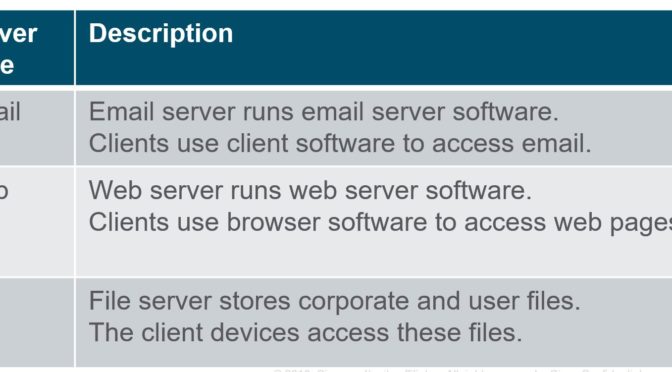This is part of the CCNA1 Introduction to Networks course. This page will be updated with texts in the future… for now, please refer to my lecture on my YouTube channel.
Summary of the Module 3
The Rules
-Protocols must have a sender and a receiver.
Common computer protocols include these requirements: message encoding, formatting and encapsulation, size, timing, and delivery options.
Protocols
-To send a message across the network requires the use of several protocols.
-Each network protocol has its own function, format, and rules for communications.
Protocol Suites
A protocol suite is a group of inter-related protocols.
TCP/IP protocol suite are the protocols used today.
Standards Organizations
-Open standards encourage interoperability, competition, and innovation.
Reference Models
-The two models used in networking are the TCP/IP and the OSI model.
-The TCP/IP model has 4 layers and the OSI model has 7 layers.
Data Encapsulation
-The form that a piece of data takes at any layer is called a protocol data unit (PDU).
-There are five different PDUs used in the data encapsulation process: data, segment, packet, frame, and bits.
Data Access
-The Network and Data Link layers are going to provide addressing to move data through the network.
-Layer 3 will provide IP addressing and layer 2 will provide MAC addressing.
-The way these layers handle addressing will depend on whether the source and the destination are on the same network or if the destination is on a different network from the source.
